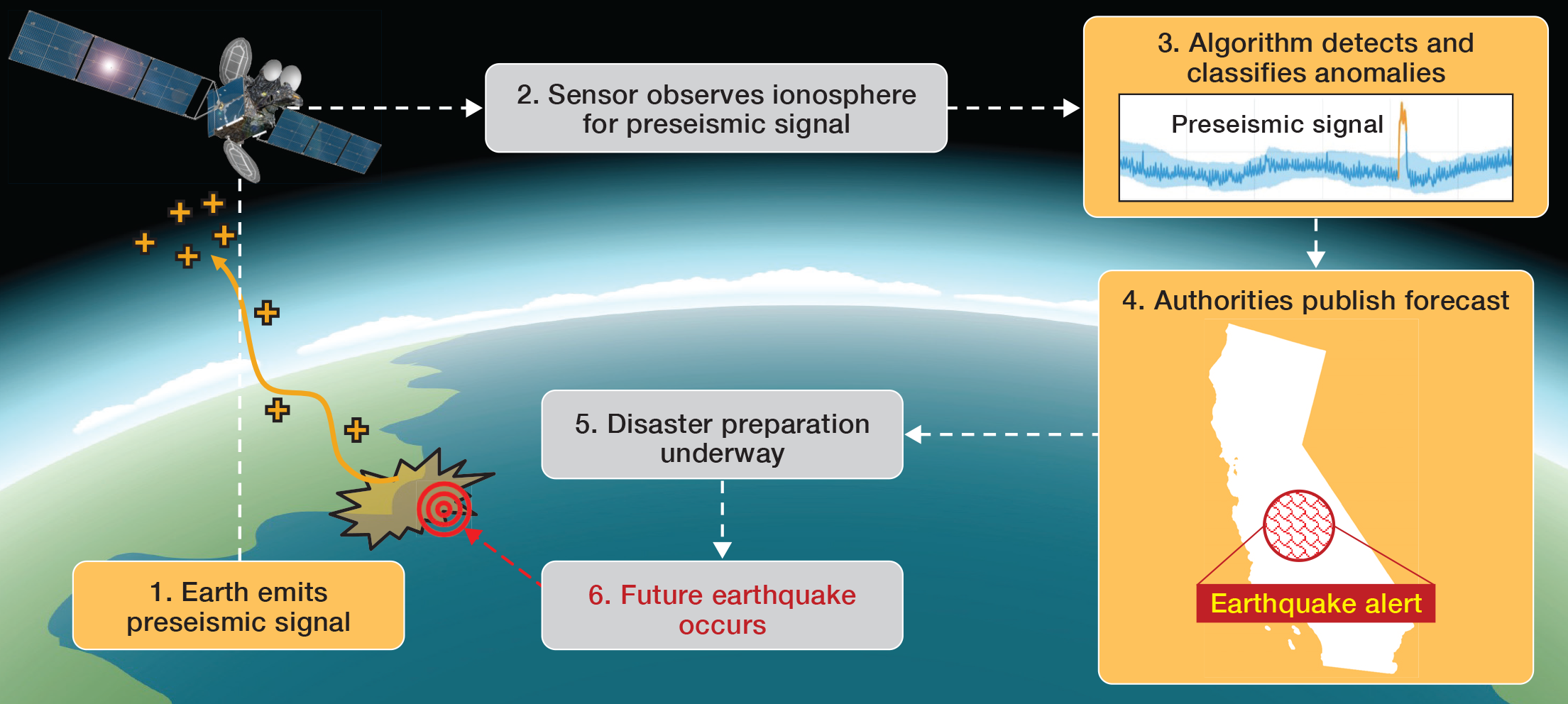QuakeCast

Lincoln Laboratory researchers are exploring technology that could provide a warning at least eight hours, and up to a week, in advance of an earthquake. Their approach leverages machine learning to identify and classify anomalous disturbances in total electron content (TEC) in the ionosphere. Such disturbances, which have been observed by the Global Navigation Satellite System (GNSS) preceding strong (magnitude 5 or greater) earthquakes, may be indicators of threatening seismic activity.
Motivation
In the last 20 years, earthquakes worldwide have caused more than 800,000 deaths and $650 billion in economic damages. Current early-warning systems provide up to a minute's notice by detecting an earthquake's nondamaging seismic waves prior to the arrival of damaging waves. With a system that gives earlier warning, emergency action planners could evacuate regions, prepare recovery resources, and put infrastructure like power plants into safe mode, thus saving lives and minimizing financial losses.
Concept

The illustration shows the forecasting steps in the QuakeCast approach: a signal is detected by sensor aboard a satellite; an algorithm detects and classifies anomalies in the data that could indicate an earthquake is imminent; this alert is then sent to emergency action planners.
GNSS satellites offer a new opportunity to study the preseismic stage of earthquakes by sensing changes in the TEC in the ionosphere that may indicate that an earthquake is imminent in the region below. Some theories suggest that microcracking in the lithosphere during preseismic processes generates stress-activated electrical currents resulting from defects in igneous rocks. The ionosphere is coupled to these electrical currents through the global electric circuit. Rapid changes in TEC have been recorded hours to days prior to an earthquake. More than 6,000 GNSS receivers worldwide persistently gather global ionospheric TEC data, which is processed at centers such as the MIT Haystack Observatory, whose TEC database is widely used by the earth sciences community.
Lincoln Laboratory has developed prototype machine learning algorithms to predict impending earthquakes from global ionosphere data. These algorithms perform significantly better than random chance and can be used to identify regions with a high risk of earthquakes in the immediate future.
Next Steps
QuakeCast is the foundation of a new method to forecast earthquakes. Researchers are working to refine system performance to achieve more accurate predictions of earthquake occurrence, location, and timing by incorporating additional data sources and algorithms.
Benefits
- Algorithmic models are trained on more than 10 years of ionosphere TEC data associated with 10,000+ earthquakes
- Goal is to classify preseismic earthquake signals by magnitude, geographical region, and event window
- Multiple types of machine learning methods have been tested, demonstrating viability of using TEC data
Potential Use Cases
- Early emergency preparations for imminent earthquakes
Additional Resources
B. Ananthabhotla, J. Liu, et al. "QuakeCast: Earthquake Forecasting Using Machine Learning to Identify and Classify Preseismic Ionospheric Anomalies as Earthquake Signals," MIT Lincoln Laboratory Project Report TIP-159, October 20, 2022.